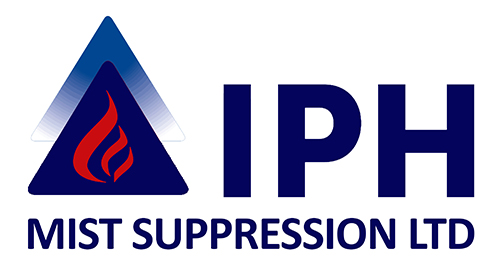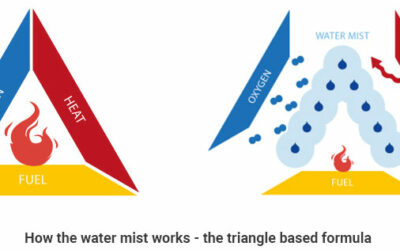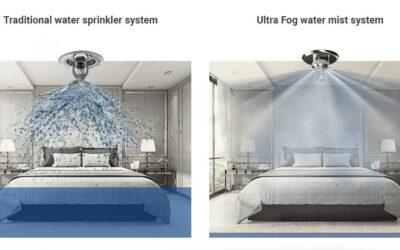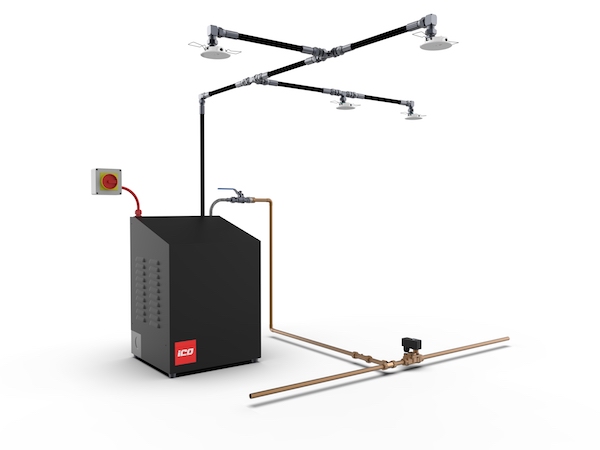Water mist systems are fire protection systems that spray fine water droplets instead of sprinkling water. The water droplets with diameters less than 1000 microns are more effective in extinguishing a fire, washing smoke and cooling the heated environment than conventional sprinklers.
There are many ways to install a water mist system. It is best to understand the working of the system to choose the best product from the shelf.
- Pressure Specifications
An important consideration when installing a water mist system is the pressure the water droplets are pushed through. Depending on the nozzle, water mist systems will create a 60-100 bar pressure to create the desired mist. However, not all places require high-pressure mist systems. Those installed at a significant height like in warehouses would need high-pressure systems.
On the other hand, water mist systems installed in residential buildings will typically be low pressure, wet pipe systems. Glass bulb nozzles with quick and automatic response glass supplied water by cylinders or tanks are appropriate for homes.
- Supply Tanks
Water mist fire sprinkler systems need a water supply just like regular sprinkler systems. However, the size of supply tanks for water mist systems is smaller because they require less water to operate. Still, it is essential to match the supply tank’s pressure, nozzle type, and capacity so that the water mist system functions correctly when triggered.
The water mist system from the company IPH Mist Suppression deploys 80% less water than a conventional sprinkler system. If you choose this water mist system for your project, you should consider that you will not need a large tank and will save a significant amount on equipment costs.
- New Regulations For Tall Buildings
From November 2020, all new buildings over 11 metres must have fire suppression systems installed along with proper wayfinding signage.
You should always check if the water mist system you choose to install meets the regulatory requirements for fire suppression.
- Site Audit
Building professionals and homeowners both should first audit the site where the mist system is intended to be installed. Possible fire causes should be enlisted, and a list of flammable items in the area should be made.
This practice is helpful to plan where the mist system should be installed for maximum effectiveness and quick response. Once you know where the water mist system will go, you can calculate the need for other equipment like tanks, pipes and nozzles. Next, you will decide which type of pipes and nozzles would be best for the site, according to the observations. Finally, you can write it all down and ask IPH Mist Suppression for a free quote to make sure you get the best offer.
- Additives
Water mist systems are becoming a popular choice everywhere, from residential buildings to naval vessels. It is crucial to find out if additives are to be mixed with the water supply.
Sometimes, it is essential to improve the efficacy of the water mist by inserting additives in the water. Additives like Aqueous Film-Forming Foam (AFFF) can help fight liquid fires burning from fuel or grease; plain water would only make it worse. Similarly, additives like propylene glycol and potassium acetate are used to depress the freezing point of the water in supply tanks. This practice is common in regions where the temperature is expected to drop below zero degrees. Without an additive, water will freeze, and the mist system will not function properly.
- Hoses And Fittings
The perfect water mist system would not work without properly connected hoses and fittings. You must ascertain the specific requirements and quality of the hose and fittings before installing the water mist system.
IPH Mist Suppression, for example, uses stainless steel hoses that are corrugated and flexible. The hose is fire and heat resistant and can operate in any environment.






